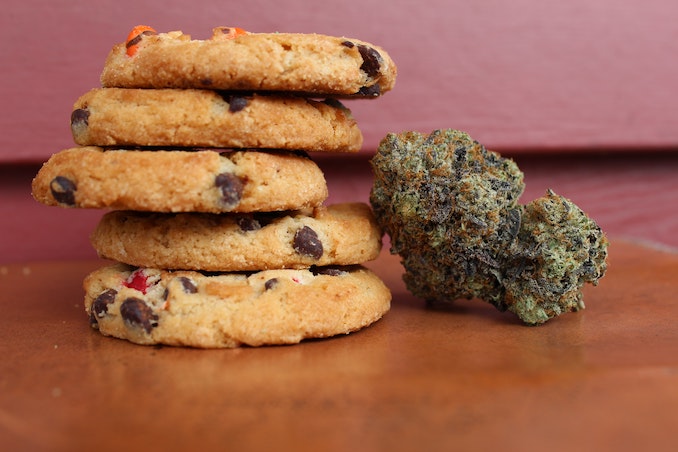Marijuana edibles have exploded in popularity in recent years. Driven in part by increased legislation across a host of countries throughout the world – legalising its use and regulating the market of sale and distribution – ingesting marijuana in the form of candy or chocolate is quickly becoming one of the most popular methods.

Manufacturers offer a staggering range of different edible products, with more hitting the market all the time. For the beginner, the choices can be overwhelming. Plus, hard-to-decipher industry language can discourage first-timers even more. We’ve put together a guide for you to make sense of some of the terms you might see when looking to buy weed edibles online, and to help you decide the best kind of edible for you to try first. Keep reading to check it out.
What are edibles, and what do they do?
Before we get started, it’s important that we clarify just what edibles are and what you can expect from them. Edibles are the name given to any food or drink infused with marijuana. The main psychoactive compound in marijuana is something called tetrahydrocannabinol, commonly known as THC. This is what causes the effects that marijuana is famous for.
When marijuana is smoked or vaporized, the effects come on rapidly before dissipating after approximately two-to-three hours. Edibles work slightly differently because THC takes a different route to the brain than when smoked or vaped. The effects take longer to kick in and, when they do, can be much stronger and are far more long-lasting.
The speed of onset can differ depending on the kind of edible you use, so let’s take a look at some common types and examine the differences between them.
Gastrointestinal edibles
Gastrointestinal edibles, often called chewable edibles, are food-based edibles that are chewed and swallowed. These can include products like brownies, cookies, chocolate, candy, or gummies. The THC from these edibles is not absorbed into the bloodstream until the product hits our gastrointestinal tract. From there, it is metabolized in the liver before being sent back into the bloodstream and onto the brain. This can be a long process, taking anywhere from 30 minutes to up to an hour. For newcomers, it’s vital you show patience and wait for the effects to kick in. Resist the temptation to eat more, as this can lead to too much THC in your system and cause negative effects.
Sublingual edibles
Sublingual edibles are products that are absorbed through the fine membranes in the mouth rather than through the digestive tract after swallowing. Sublingual products can include gum, lollipops, and lozenges. These are absorbed more quickly than gastrointestinal edibles, as they take a faster route to the brain. As well as being more fast-acting, some users report sublingual products to produce less intense and less lengthy effects than their gastrointestinal counterparts, so they may be a good choice for beginners.
Dosing edibles
When it comes to marijuana edibles, correct dosing is absolutely critical for beginners and for experienced users as well. The THC content of a particular edible will determine how strong the effects will be and how long they will last. Edibles come in a wide range of strengths and degrees of potency, from extremely mild 0.5mg products to heavy-hitting 1000mg offerings.
Beginners should pay close attention to THC content; it is generally clearly displayed on products to help you make the correct choice. For first-timers, the golden rule when it comes to edibles is to start small and start low. Choose a product with a low THC content and divide it up into smaller pieces. Eat one and wait to see how you react to it. Avoid eating any more for another 24 hours. If you handled it well, increase the amount you eat slightly for next time. Doing this gradually and increasing your intake incrementally will allow you to safely and accurately discover the ideal dose for you.
Conclusion
Choosing to try edibles for the first time can be an exciting experience but, for some, can raise some questions as well. Difficult-to-understand terminology and a wide range of products can appear overwhelming, but guides and informative articles can make these manageable.
Ensuring you are properly informed and abreast of all the industry terms and jargon you might come across will work to make your experience far safer and, more importantly, fun. Take time to check out all the different types of products available, know how they can affect you differently, and make yourself aware of proper dosing recommendations.
